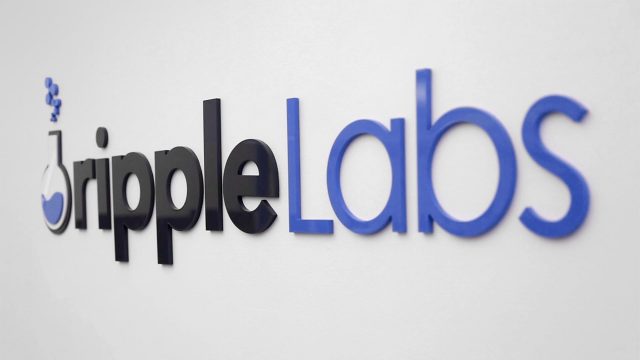
What Really Suppresses Ripple’s (XRP) Price

Ripple (XRP), a product of Ripple Labs, which is a San Fransisco, California based Monetary Solutions Provider company saw a significant shift in its digital token’s XRP price last year, reaching a 1500%+ change in a matter of weeks between the period of early December 2017 (~$0.25 USD) and mid-January 2018 (~$3,80 USD).
Therefore the price started to significantly drop until the point where one XRP token would cost approximately around $0.90 USD on January 20th of 2018.
Ripple (XRP) is trying hard to regain its once worth of $130 bn market cap that propelled Ripple right under Bitcoin, at the second place according to CoinMarketCap’s sorting list based on market capitalization earlier this year.
Currently having a market cap of $50 bn and a price per unit ranging around $1,22 USD, Ripple is bartering below Ethereum (ETH) who sharply reclaimed the second place after Ripple\s hit in the guts.
So what caused that big loss? Today we’re showcasing various factors that may have affected Ripple’s price both practically and psychologically and analyze whether these factors should ever have an impact on Ripple’s price or not.
In a previous article, we took a dive into Ripple’s deal with MoneyGram and discussed why it didn’t surge the XRP token as expected both from the side of the company and the investing community.
Besides the obvious factors that affected the cryptocurrency market scene in general – I am talking about the Korean markets’ investigation that took place a couple weeks ago due to highly volatile arbitrage opportunities created by the Korean markets, targeting the western investing crowd – affecting the average price of almost every single cryptocurrency in the top 200 list according to CoinMarketCap, Ripple’s price got an extra hit by the day Coinbase announced with an official statement that they won’t be listing Ripple on their platform anytime soon and that there are actually no plans on doing so for the moment.
I believe that 1/3, if not more, of Ripple’s market cap at the beginning January, was generated based on rapidly spreading “news” about Ripple getting listed on Coinbase, a platform where you could buy and sell Ripple’s XRP token for Euro / USD and deposit or withdraw funds at any time using your linked credit/debit card and verified bank account. Therefore it was only natural for that 1/3, if not more again, to be immediately withdrawn from XRP, with investors regretting their decision after Coinbase’s announcement on the matter.

That was not the only blow Ripple Labs and XRP had to endure at that time. According to Reuters, last year, New York-based blockchain startup R3 Holdco LLC has sued rival company Ripple Labs Inc. over a contract to purchase Ripple’s digital currency XRP, according to a lawsuit filed in the Delaware Chancery Court.
In September 2016 the two companies had entered an agreement giving R3, the right to purchase up to 5 billion XRPs at a price of $0.0085 per unit at any point by September 2019, according to the lawsuit.
In June 2017 Ripple’s chief executive Brad Garlinghouse attempted to terminate the options contract through an email to R3’s chief executive David Rutter, according to the lawsuit. R3 alleged that the contract does not give Ripple the right to terminate it unilaterally and is asking the court to declare that it is entitled to all its rights, including purchasing the XRP anytime over the next two years.
Now, that’s a serious factor that could dramatically affect Ripple’s price and nobody is talking about it, while at the same time they’re focusing on speculations and “technical chart analysis”. Don’t get me wrong, some technical chart analysts can be decent, but you can only find them behind closed doors, already working for Goldman Sachs and their class.
We know that Ripple Labs, and especially the CEO Chris Larsen own a substantial amount of XRP tokens making the platform literally “Centralized” in a “decentralized-based” scene. If R3 had the opportunity to buy XRP at any time until September 2019 what would they do? – Come on people, guess. – That’s right! They would use the opportunity to buy XRP tokens when they hit their all-time high, which was right before the big dive.

Of course Ripple chief executive wouldn’t like that and of course, he would try to cancel the deal since R3 could gain a 44705%+ simply by buying and instantly selling XRP on an exchange. With 5 million XRP as their cap according to the particular contract that would make R3 $19,000,000 USD at the expense of $42,500 USD in an instant.
So what was the best way to cut losses from Ripple’s side? They could manipulate their own market, selling their own stakes in order to short the price and eliminate 2/3 of the damage, giving R3 the option to settle at ~$7,000,000 with the current price. It’s either that, either Ripple being steady if not falling until September 2019 when the deal expires.
Being a monetary organization, I am confident that Ripple would take the hit, lose $7 mil to R3 and start rising again as soon as possible, otherwise, that steady $1,22 we are seeing nowadays will start to take the downfall day by day in the next month.
Last but not least, a current publication by Bloomberg titled “Banks Don’t Want Ripple’s $80bn of Digital Money” is having its own round of attraction. The video publication is clearly made up, but it seems to affect the investing crowd when it comes to trusting Ripple.
That’s my personal thoughts guys. Let me know what you think in the comments below. When do you think Ripple will start rising again and why?
Reporting for The Independent Republic, Ross Peili